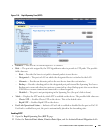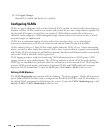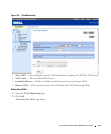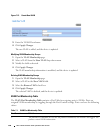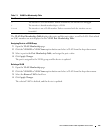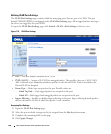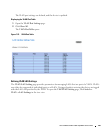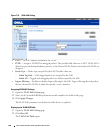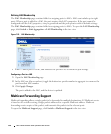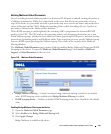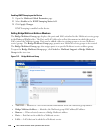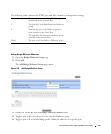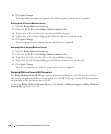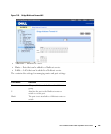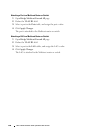
Dell PowerConnect 28xx Systems User Guide 131
Aggregating Ports
Port Aggregation optimizes port usage by linking a group of ports together to form a single
Link
Aggregated Group
(LAG). Port Aggregation multiplies the bandwidth between the devices, increases
port flexibility, and provides link redundancy. The device supports up to eight LAGs, and each LAG can
have up to eight members.
Each LAG is composed of ports of the same speed, set to full-duplex operations. Ports in a LAG can be of
different media types (UTP/Fiber, or different fiber types), provided they operate at the same speed.
The device provides LAG Load Balancing based on both source MAC addresses and destination MAC
addresses.
Aggregated Links are treated by the system as a single logical port. Specifically, the Aggregated Link has
similar port attributes to a non-aggregated port, including auto-negotiation, speed, etc.
The following guidelines should be followed when adding ports to a LAG:
• There is no Layer 3 interface defined on the port.
• The port does not belong to any VLAN.
• The port does not belong to any other LAG.
• The port is not a mirrored port.
• The port's 802.1p priority is equal to LAGs 802.1p priority.
• QoS Trust is not disabled on the port.
•GVRP is not enabled.
The device uses a hash function to determine which frames are carried on which aggregated-link
member. The hash function statistically load-balances the aggregated link members. The device
considers an Aggregated Link as a single logical port.
Each Aggregated Link has an Aggregated Link Port Type, including Gigabit Ethernet ports. Ports can be
added to an Aggregated Link only if they are the same port type. When ports are removed from an
Aggregated Links, the ports revert to the original port settings. To open the Link Aggregation page, click
Switch Link Aggregation in the tree view.



